
Everyone wants the one scope to rule them all. The (not so) dirty little secret is, there isn’t one. No matter how much you spend, you’re not going to find a scope that lets you be effective from close quarters situations out to 1200 yards. Not when you’re shooting a 16-inch 5.56 rifle. Which means, you have to make some decisions.
If you’re like most people, you’re looking to use your AR platform rifle out to 200 to 250 yards. Maybe 300 yards. We’re talking home defense use and the kinds of range distances at which most people shoot. And if you’re accurate and consistent with it at those distances, you’re calling that good.
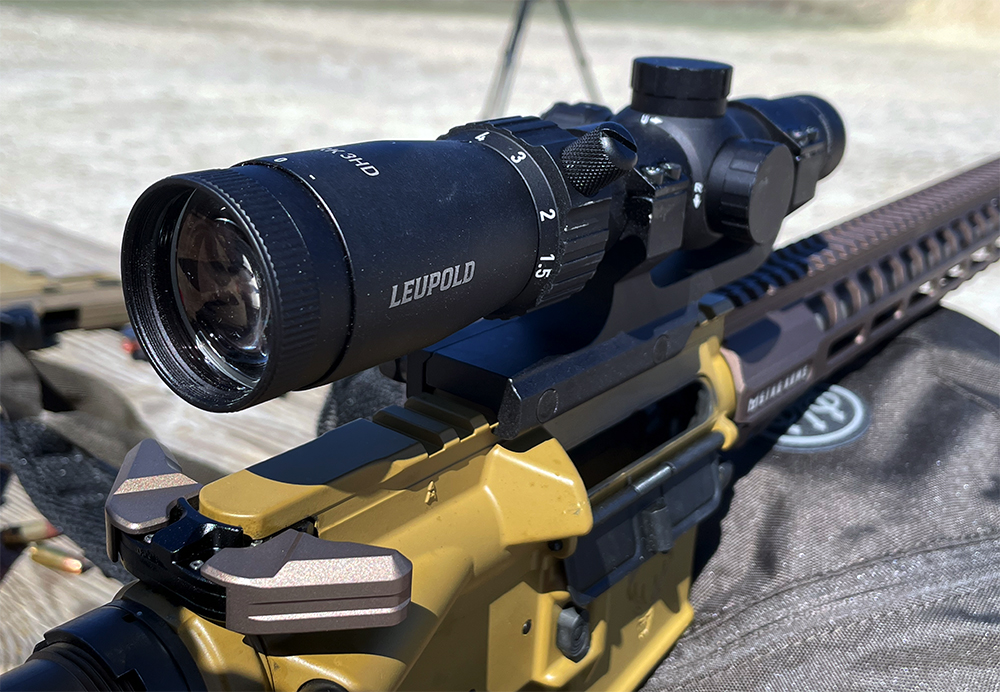
You can always buy a standard rifle scope and use offset irons for closer range work, but as the increased popularity of low power variable optics should make clear, more and more people want an optic that can do both. An LPVO isn’t really a do-all optic, but for most people, it does everything they need and want and optic to do.
While you can certainly get LPVOs these days with magnification of as much as 8X, the reality is most people will never use that full range. And an LPVO with a 3X magnification range like Leupold’s Mark 3HD 1.5-4×20 scope gives you everything you need to be effective from under 25 yards out as far as 500 yards if you use it to its fullest capabilities. And the Mark 3HD is, in fact, very capable.
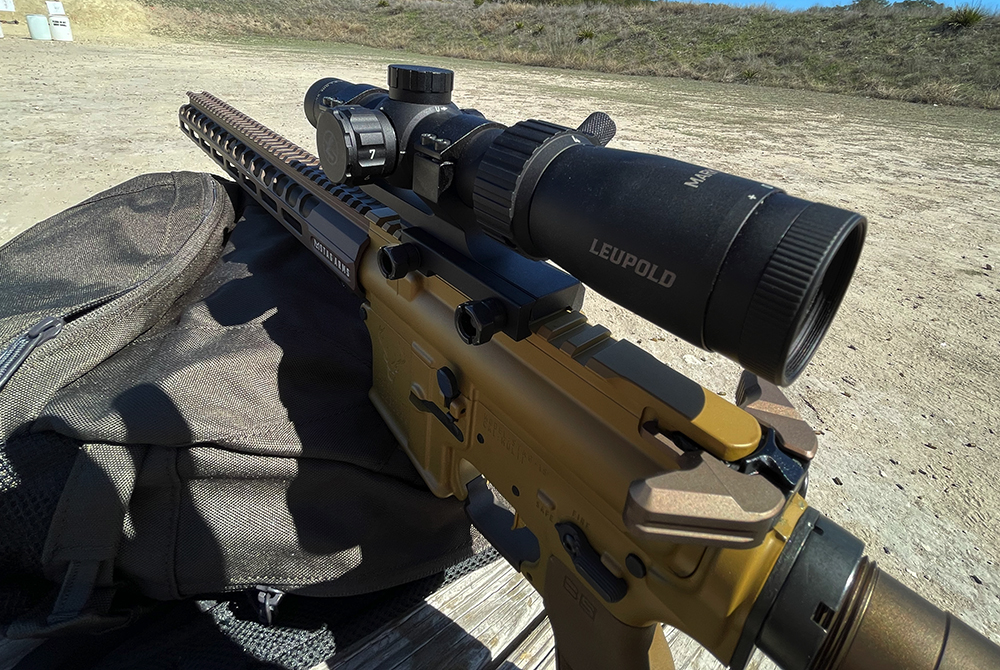
The second focal plane Mark 3HD 1.5-4×20 has a minimum magnification of 1.5x. No, that’s not 1X like reflex sights, or some other LPVOs, but it’s a minimal enough amount of magnification to use in the same role, with both eyes open at close range.
This version of the Mark 3HD 1.5-4x has Leupold’s FireDot illuminated dot with seven brightness levels. It runs on a standard CR2032 battery and has seven brightness level adjustments on a dial where you’d find. Leupold designed the adjustment dial (on the left side where higher magnification scopes have a parallax adjustment dial) the right way, with off positions between each brightness setting. That way you’re not spinning the dial
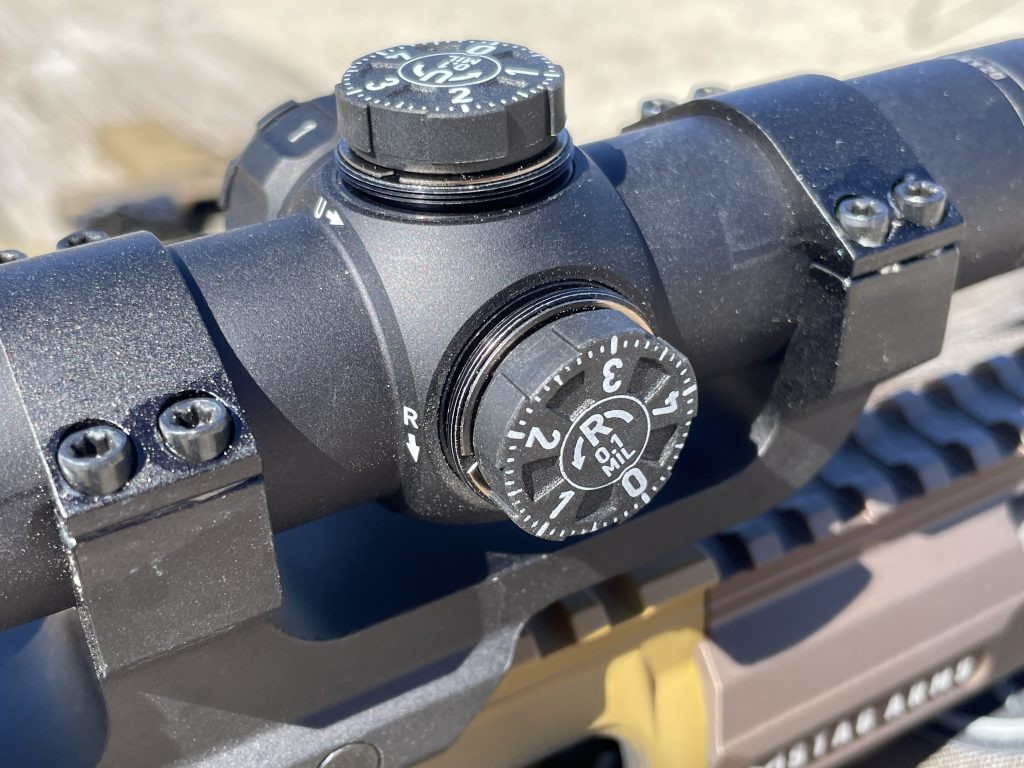
The scope has capped turrets and .1 mil adjustments. If you’re like a lot of shooters, once you zero your rifle and scope, you’ll keep the windage turret capped. At the distances you’re most likely using this rifle/scope combination, wind won’t be much of a factor. And if you’re stretching things out a bit more, Kentucky windage is usually fastest.
Both turrets are clearly marked and adjust nicely with well-defined detents.

The Mark 3HD 1.5-4×20 has a center red dot — Leupold’s FireDot — in a simple, BDC reticle. There are no windage hashes. While some who stretch the Mark 3HD out to 200 yards and beyond may miss windage hashes, in the role most will use this scope, they won’t be missed.
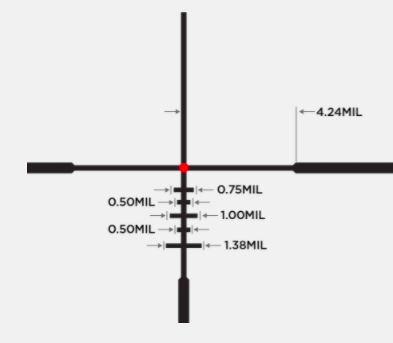
If you’re not a BDC reticle fan or it’s not right for your intended use, not to worry. Leupold offers the Mark 3HD 1.5-4×20 in three other MIL reticle options (MIL Dot, TMR, SPR) and one MOA (AR Ballistic) so there’s something for everyone. There are also non-illuminated versions which will save you a couple of hundred dollars.

One of the best features of Leupold’s Mark 3HD scopes is their almost astonishing edge-to-edge clarity. It also has Leupold’s Elite Optical System hydrophobic Guard-ion lens coating. In plain English, that means more shooting time, both early in the morning just after dawn and at the end of the day as the sun goes down.
I’ve tested Leupold’s coated glass against that of a range of other scope makers and there is an observable difference in terms of less glare and better light transmission in difficult (low) lighting conditions. That means more legal hunting time compared to other brands.
Quality glass and coatings ultimately makes all the difference. Leupold’s scopes are made in America and feature excellent fog and water resistance, too (they also back their scopes with a no-questions-asked lifetime warranty).
I’ve owned this one for a couple of years now. I’ve banged it around, dunked it in water, put in in the freezer, and box-tested it a few times. Nothing has phased it.
And no, you don’t have to mount a Mark 3HD 1.5-4×20 scope on an AR. It will be perfectly well suited to a lever rifle or a bolt gun and will give you great performance out to 500 yards if you do your part. Leupold glass stands up to comparison with any optic marker in the business and the Mark 3HD is capable of doing everything most rifle shooters need…whether they know it or not.
Specifications: Leupold Mark 3HD 1.5-4×20 with Illuminated FireDot BDC
Reticle: Second Focal Plane BDC
Eye Relief: 4.2 in (low magnification), 3.7 in (high magnification)
Length: 9.4 inches
Tube: 30mm
Weight: 9.6 oz
Battery: CR2032
Battery Life: 1600 hours (low), 300 hours (high)
Auto Off: Yes
Price: $699.99

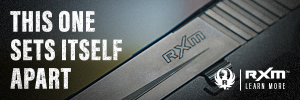
As this article states, if you want a sighting system which works REALLY well for ranges between 2 and 200 yards, low power variable optics really are the optimum choice in my opinion.
My only quibble is that this Leupold low power variable optic only goes down to 1.5x magnification–I want it to go all the way down to 1x magnification (which is no magnification at all). I don’t know why Leupold did that. I have a Nikon low power variable optic scope which goes all the way down to 1x magnification and it is FANTASTIC being able to keep both eyes open and seeing the same image in both eyes for close shots. I know that this article says that you can do that at 1.5x magnification: I would have to see that before I would believe that it would not be problematic.
The only glass I have on my long range items is Leupold. Even my spotting scope.